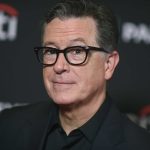The limits of news images as political catalysts for a sustained humanitarian response
By Nicole Smith Dahmen and Paul Slovic; Associate Professor, School of Journalism and Communication, University of Oregon; and Professor of Psychology, University of Oregon When the Associated Press published Julia Le Duc’s photograph of a drowned Salvadoran man, Óscar Alberto Martínez Ramírez, and his 23-month old daughter Valeria, it sparked outrage on social media. According to Le Duc, Ramírez had attempted to cross the Rio Grande after realizing he couldn’t present himself to U.S. authorities to request asylum. But beyond raising awareness via Twitter and Facebook feeds, does an image like this one have the power to sway public...
Read More















